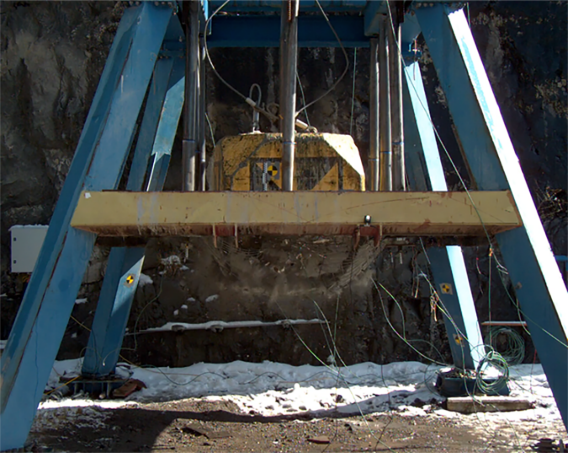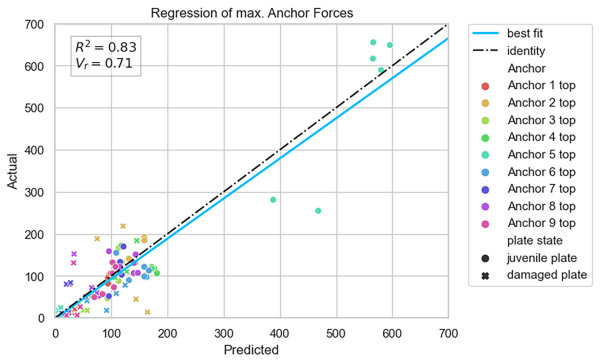AI-based prediction model for the “Rock-burst” impact test for reinforced shotcrete slabs
Author: Michael Härdi
Language: English
Abstract
The Swiss-based company Geobrugg conducted several experiments to examine the fitness of their newly developed steel mesh. The mesh is used in underground construction and mining. The tests were conducted by Geobrugg on their own test site. Their tests setup consisted of a shotcrete plate on which the mesh is mounted with nine anchors. To tests its resistance, a concrete block is dropped onto the shotcrete plate. The experiments were precisely monitored, with force measurement of all anchors, four high speed cameras and an accelerometer installed on the concrete block.
In this thesis, the applicability of different Machine Learning and Deep Learning algorithms on the given test database is explored. What is particularly challenging about this problem is the limited availability of data, as it is often the case in such large-scale experiments. Only ten tests were used for modelling in this thesis. Additional complexity is added to the model by pre-damaged plates. In four tests a shotcrete plate was used, that had already been used and considerably damaged in a previous experiment. Three of them failed, while five of the six undamaged plates restrained the block. This flaw in the dataset was difficult to overcome, hence it was proposed in this thesis to conduct further tests to improve the quality of the dataset.
Three different Machine Learning models are investigated in this thesis. The first two models tried to correctly classify the test result (failure or no failure of the plate). A first model with features describing the test setup and features measured during the test achieved good results. A mean test accuracy of 0.78 was achieved. A model that was only given features describing the test setup didn’t reach similarly good accuracy results. Additional tests could be needed to improve its performance. Finally, a regression model was looked at in this thesis. It predicts the maximum anchor forces for each test. Since the force measurements displayed a large variance between individual tests the obtained results weren’t nearly perfect. The best performing model design achieved a coefficient of determination R2 of 0.83 and a mean absolute error of 38 kN.
In final stage of this thesis, the applicability of Long Short-Term Memory (LSTM) neural networks on the time-dependent anchor forces was analysed. By “walking” through the time series, such models can learn complex patterns from sequential data. A preliminary model trained on one test showed promising results on the validation dataset: a mean absolute error of 6.3 kN was achieved. An extension of this model is thought to further improve its performance.
In conclusion, this thesis demonstrated the abilities of Machine Learning on small datasets. The performance was shown to be highly dependent on the quality of the data. An additional test campaign is thought to improve the performance of the models.


